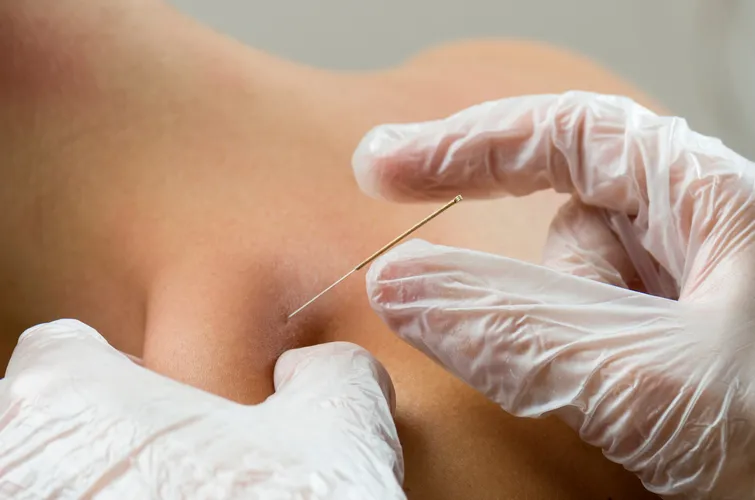Dry needling
what is dry needling?
Dry needling is a modern treatment technique based on Western medicine. It targets myofascial trigger points, which are tight, sensitive spots in the muscle that can cause pain, stiffness, or restricted movement. It may help to:

- Release tension in the muscle
- Improve blood flow and healing
- Reduce pain sensitivity
- Support faster recovery and better function
Muscle twitch: Sometimes the muscle may twitch when the needle is inserted. This is a natural response and may help the muscle relax, but it is not always needed for results.
dry needling vs acupuncture
Although both dry needling and acupuncture involve fine needles, their background and approach are different:
Acupuncture: Part of Traditional Chinese Medicine (TCM). Focuses on balancing the body’s energy flow, known as Qi, through pathways called meridians.
Dry Needling: Based on modern anatomy and neuroscience. Targets muscles, nerves, and trigger points to relieve pain and improve movement.
Overlap: Many trigger points match acupuncture points (70–90%), but the methods and goals are different.
who should avoid or take caution
Dry needling is safe for most people, but it may not be suitable for everyone.
Do NOT have dry needling if you have:
- Active infection at the treatment site
- Severe bleeding problems or are on strong blood thinners
- Severe needle phobia
- Pregnancy (first trimester and some areas may be avoided)
Use caution or get medical clearance if you have:
- HIV, AIDS, or Hepatitis
- Immunosuppressant medication
- Unstable blood pressure
- Pacemaker or other implants
- Cancer
- Diabetes with nerve or healing issues
- History of fainting or seizures
Your therapist will always review your health and adapt treatment to keep it safe.
possible side effects
Most people tolerate dry needling well. Some mild effects may occur:
- Drowsiness – avoid driving or operating machinery if affected
- Minor bleeding
- Discomfort or pain during treatment
- Temporary worsening of symptoms – often indicates the body is responding to treatment
- Muscle soreness and bruising – may last for a couple of days
- Fainting – very rare, more likely on the first session
Your practitioner will discuss any specific risks with you.
aftercare advice
To reduce side effects and achieve the best results, stay hydrated, get plenty of rest, and avoid strenuous activity. Steer clear of public hydrotherapy areas (pools, saunas, hot tubs, etc.) for 24 hours to reduce the risk of infection.